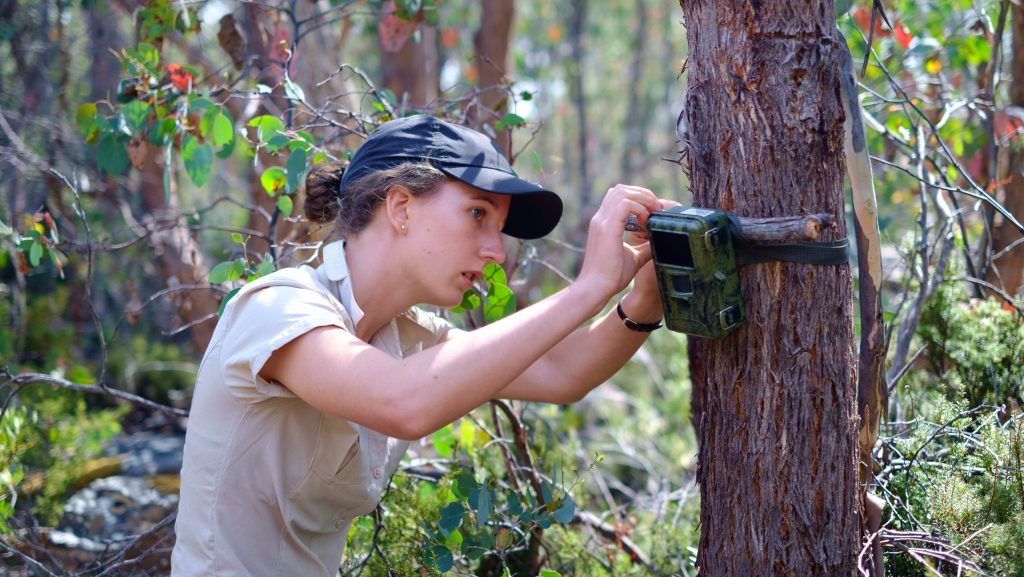Here’s how it works:
- Submit the Expression of Interest form below. We ask for your property address to personalise your account and display your property boundaries, making it easy to set up survey sites. Once your account is ready, you’ll get an email from us. Please be patient while we process registrations.
- If you have a camera, fantastic! If not, Land for Wildlife members can borrow a camera pack from us, or you can use the discount code provided after submitting the EOI to purchase your own.
- Create a survey site on the WildTracker website and set up your camera outdoors.
- Leave your camera in place for a month to let the critters have their photos taken.
- Upload your camera trap photos to WildTracker. Note that we currently only accept still images. Stickybeak, our AI model, will automatically filter out images without wildlife or with people, so you don’t need to worry about deleting these beforehand. Stickybeak will also do its best to identify the species in your photos.
- Review Stickybeak’s tags — accept or reject them as you see fit. If you’re unsure, refer a photo to an expert. Don’t worry about needing perfect ID skills; every tagged wombat is one less for us.
- Share your favourite wildlife photos with friends, family, and neighbours to spread the excitement of conservation. Invite other users to help tag or view the photos on your property account.
- Scientists at the Tasmanian Land Conservancy use the data you provide to better understand and protect wildlife. Our aim is to share a quality dataset with State and National biodiversity atlases.
- Repeat! The most valuable data comes from repeated surveys at the same site to track changes in wildlife communities. We especially encourage setting up cameras in areas where you might be undertaking habitat restoration efforts.
- Attend a WildTracker or Land for Wildlife event to learn more about the species living in your backyard and ways to support them.

People of all age groups can be involved in WildTracker. Camera trapping makes an excellent school holiday activity — think of it as fishing, but for mammals. You never know what you’ll catch! However, those under 18 will need an adult to join WildTracker and register a property first. Once that’s set up, they can invite young scientists as new users to get started.
For other ways to support the critical conservation work of the Tasmanian Land Conservancy, you can sign up as a volunteer or give a donation over at the TLC website.
